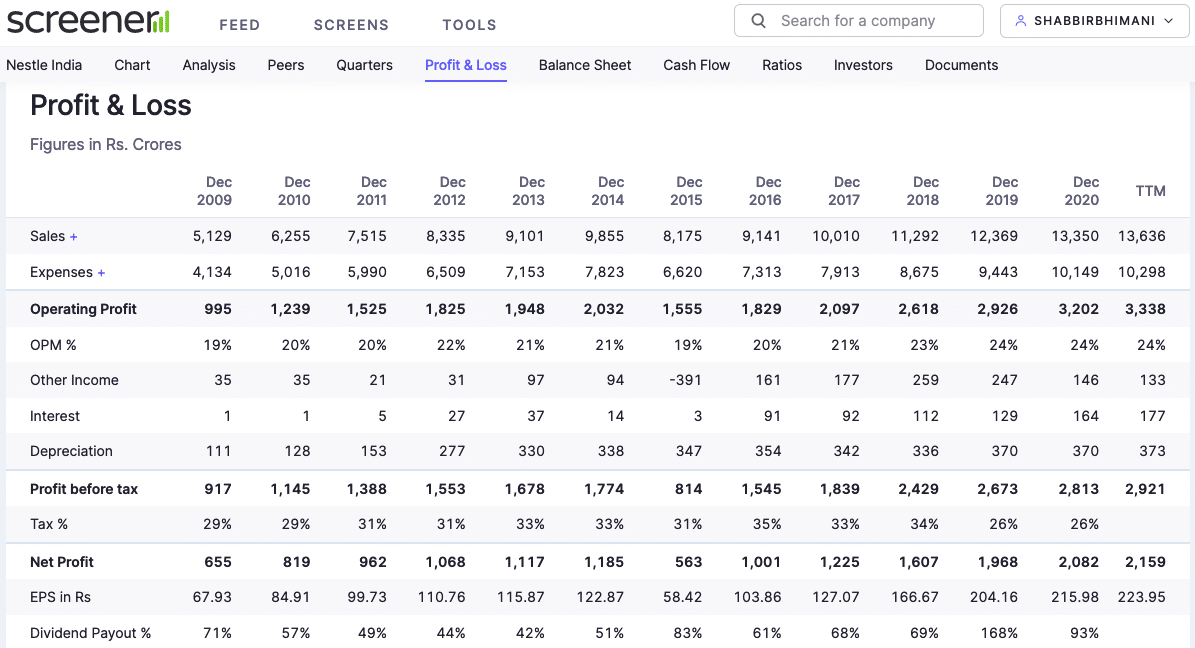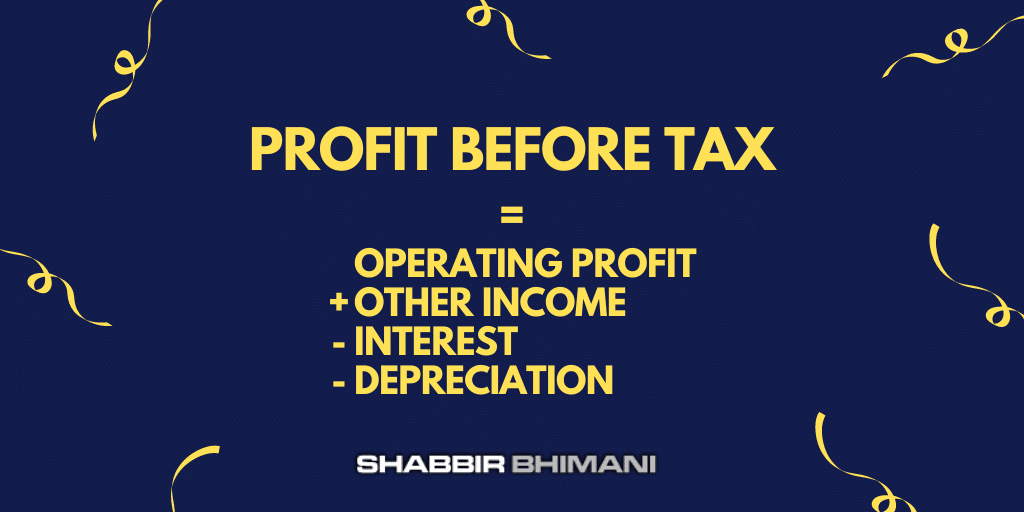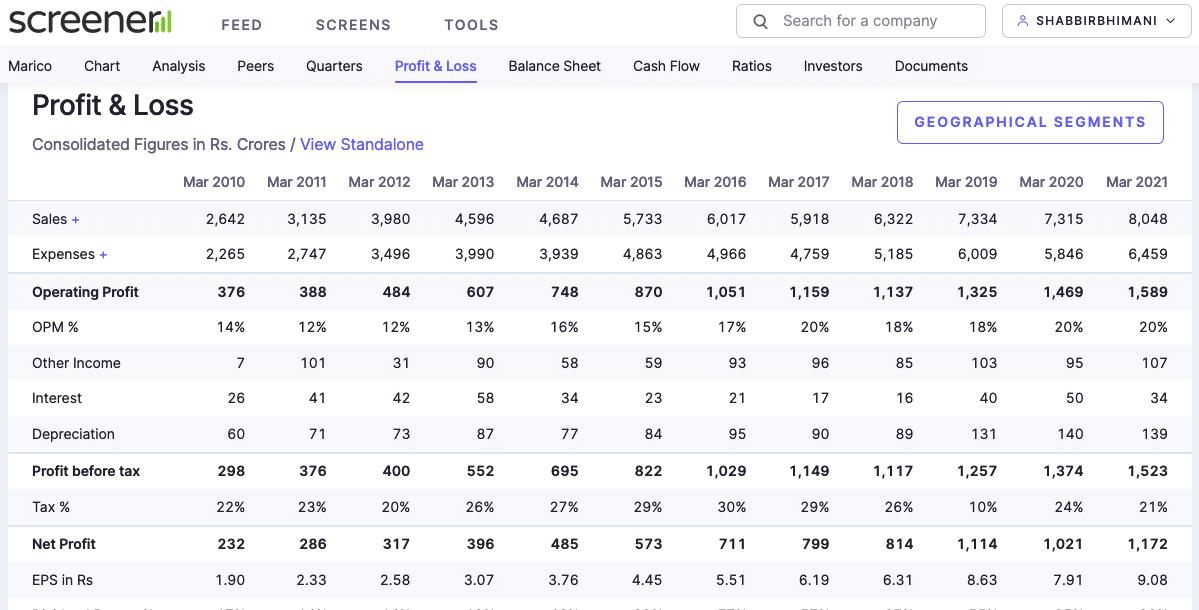What is profit before tax or PBT and profit after tax or PAT? How to Calculate PBT and PAT and how investors can use PBT and PAT
Let’s understand the term profit before tax in simple language. It is also referred to as earnings before tax (EBT) or pre-tax profit.
What Is Profit before Tax or PBT?
The term profit before tax, or in short known as PBT, is the profit that a company makes before paying off the corporate income tax.
Let’s look at the Profit before tax or PBT for Nestle India from Screener. (I Use these 7 Sites For All My Analysis)
We have rows, and let me explain one line about each to be able to understand the PBT clearly:
- Sales – Total sales made by the company in a year. Also known as revenue. It is one of the crucial aspects to consider when investing in any company.
- Expenses – Total expenses incurred by the business for making the sales.
- Operating Profit – Deducting the expenses from sales is the total operating profit.
- OPM% – OPM stands for operating profit margin and represents operating profit to sales in percentage terms.
- Other Incomes – Income from other sources. Typically, it is the income from cash kept in Fixed deposits or sale of assets etc.
- Interest – The amount the company is paying as interest for the debt in its books.
- Depreciation – The assets that depreciate over time, like furniture or computers. A fixed percentage for each investment category, like furniture, depreciates at less rate than electronics. The depreciation is an expense to the business.
Calculation of Profit before Tax
The formula for Profit Before Tax or PBT in the above example is:
So for Nestle India, the PBT is:
3,202 + 146 – 164 – 370 = 28141
1The image shows 2813 as some numbers are approximate to the nearest integer.
What Is Profit after Tax or PAT?
Profit after tax or PAT is the final profit a company makes. It is the money that remains with the company as profit.
PBT is the amount that is with the company before paying taxes. Once the company pays the tax, the amount that remains is the pure profit a company makes.
PAT is the amount that a business earns a profit for its shareholders. The distribution of profits among shareholders as dividends or buyback is from the PAT income.
How PAT and PBT Can Help Investors?
As an investor, the critical aspect is to know how PBT or PAT can help you analyse a business for investing.
PBT is pre-tax income, and PAT is the final earnings for the company.
PBT is a metric to determine the cost efficiency of the management and how they operate the business to generate a better return on capital from the company.
Some sectors may have a low tax burden. For example, renewable energy companies or Electric Vehicles can be subject to tax benefits. So such companies PBT can help in understanding the efficiency of the management instead of PAT. Companies can make a profit at PAT levels because of tax benefits. However, it is essential to make profits at PBT levels as well.
PAT is the retained earnings with the company. Therefore, comparing PAT and PBT can help determine the tax efficiency of the management and how the company is taking advantage of the tax benefits offered by the Governments to generate better returns for its shareholders.
Look at the Tax percentage of Marico and compare it to Nestle India. They have never paid a 35% tax like Nestle. I am not sure why it is like that, but Marico may have been getting some tax benefits for exports.






Leave a Reply